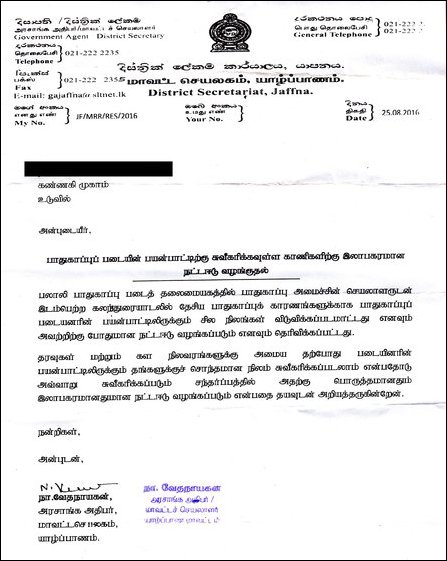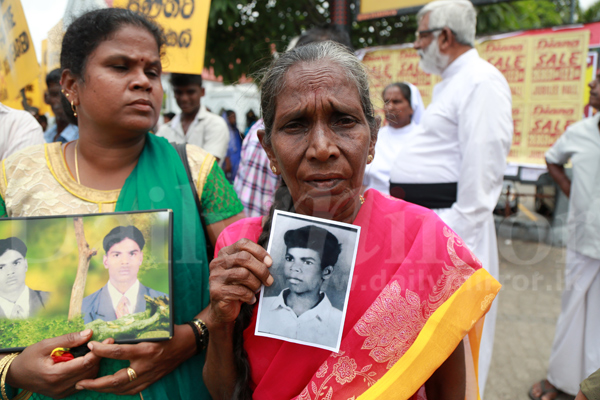SRI LANKA’S TRANSITIONAL MOMENT AND TRANSITIONAL JUSTICE – RUKI FERNANDO

(Light among the darkness: Hindu religious festival in Colombo July 2015 ©s.deshapriya)
Within the first month after winning the parliamentary elections in August 2015, the new Government made a series of commitments related to transitional justice. These were articulated through a speech by the Foreign Minister at the 30th session of the UN Human Rights Council.[1] These commitments were also reflected in the resolution on Sri Lanka that was adopted by the Human Rights Council on 1 October 2015.[2] The resolution came just after the UN High Commissioner for Human Rights had published a report which alleged war crimes and crimes against humanity and other serious violations of international human rights and humanitarian laws, by both the Sri Lankan government and the LTTE.[3]
Government’s commitments
The present Government’s commitments included setting up an Office of Missing Persons (OMP), a Commission for Truth, Justice, and Guarantees of Non-reoccurrence, a Judicial mechanism with Special Counsel, which will have the participation of foreign judges, prosecutors, investigators and defence lawyers, and an Office for Reparations. The Government also committed to reduce the military’s role in civilian affairs, facilitate livelihoods, repeal and reform the Prevention of Terrorism Act (PTA), criminalise disappearances, ratify the Enforced Disappearance Convention[4] , review the victim and witness protection law, and range of other actions. Consultations to seek people’s views on transitional justice is underway across the country, under the leadership of some civil society activists.
The Enforced Disappearance Convention was ratified in May this year and the draft Bill to create the OMP was passed by Parliament on 11 August. There are positive features as well as weaknesses and ambiguities in the Bill[5]. Due to a history of failed initiatives, the minimal ‘consultations’ that occurred during drafting process and the lack of information on details, there appears to be very little confidence in the OMP amongst families of the disappeared. This is likely to be the case for other mechanisms, unless there’s a drastic change in approach from the government.
Reactions to transitional justice within Sri Lanka
Currently, the transitional justice agenda appears to be polarising Sri Lankan society. Opinion polls, and my own impressions, indicate that the Tamil community, particularly in the North and the East, who bore the brunt of the war, appears to favour strong international involvement. But the majority Sinhalese community appears to reject international involvement. Varying opinions have been expressed about forgetting the past, memorialisation, prosecutions, and amnesty. There are also different or contradictory opinions and expectations within each ethnic community and amongst survivors of violations and families of victims.
The Government’s transitional justice commitments have been criticised by the former President and his supporters. Even the release of a few political prisoners, the release of small amounts of land occupied by the military, and the establishment of the OMP to find truth about missing persons have been framed as an international conspiracy that endangers national security and seeks revenge from “war heroes”.
There does not appear to be an official Government policy document on transitional justice. The Government’s commitments have only been officially articulated in Geneva by the Foreign Minister and not in Sri Lanka . The Foreign Minister has been the regular advocate and defender of these commitments. Some of the meetings with local activists have been convened by him and the Secretariat for Co-ordinating Reconciliation Mechanisms (SCRM) is housed in the Foreign Ministry. All these contribute to the process being seen as emanating and driven by foreign pressure. Outreach on the Government’s transitional justice plans appears to focus on the international community and not towards Sri Lankan people.
The President and Prime Minister have not been championing the Government’s official commitments. For example, the duo have publicly stated that the commitment to have foreign judges in the judicial mechanism will not be fulfilled. Even this has not satisfied the critics alleging foreign conspiracy, and has disappointed some activists, especially Tamils, as well as survivors and victims’ families.
Developments on the ground
Monuments erected to honour the Sinhalese dominated military during the Rajapakse time continue to dominate the Tamil majority Northern landscape. Army camps that were built over some of the cemeteries of former LTTE cadres that were bulldozed by the Army after the war are still there. The loved ones of those whose remains were in these cemeteries have no place to grieve, lay flowers, light a candle, or say a prayer. While the numbers have reduced from those under the Rajapaske regime, intimidation and reprisals on families, attacks, and threats and intimidation of activists and journalists continue to occur. Limited progress on issues, such as the release of political prisoners, land occupied by military, continuing military involvement in civilian affairs in the North and East, reports of continuing abductions, and arrests under the PTA have raised doubts about the Government’s commitments.
Although a few military personnel have been convicted and some others arrested on allegations of human rights abuses, the lack of progress in thousands of other cases only reinforces calls for international involvement for justice.
Towards Rights & Democratization beyond Transitional Justice framework
Unemployment, debt, and sexual and gender-based violence is widespread in the former war ravaged areas. The new Government’s economic and development policies are focusing on trade, investment, and mega development projects, which privilege the rich and marginalise the poor. Pre-war rights issues, such as landlessness, sexual and gender-based violence and discrimination, caste, rights of workers, including those working on tea estates, still need to be addressed.
A consultation process towards a new constitution drew a large number of public representations, dealing with many of the issues mentioned above. But the next steps are not clear, particularly in finding political solutions to the grievances of the country’s ethnic minorities.
The political leadership will have to reach out to all Sri Lankans, especially to the Sinhalese majority, about its reform agenda, while taking principled actions to win the confidence of numerical minorities such as Tamils and Muslims. At the national level, the coming together of the two major political parties and support of the two major parties representing Tamils and Muslims, makes this a unique opportunity to push towards radical reforms.
It will also be a challenge to go beyond a conventional transitional justice framework and use the transitional moment to move towards reconciliation, democratisation, and sustainable development, by addressing civil and political rights as well as economic, social, and cultural rights in a holistic manner, considering the yearnings of war survivors, victims’ families, and the poor, for truth, reparations, criminal accountability, and economic justice.
[1] Speech by Hon Mangala Samaraweera at the 30th session of the Human Rights Council, Geneva, 14 September 2015.
[2] Human Rights Council Resolution, Promoting reconciliation, accountability, and human rights in Sri Lanka, 14 October 2015, UN Doc. A/HRC/RES/30/1 (adopted 1 October 2015).
[3] Human Rights Council, Report of the OHCHR Investigation on Sri Lanka (OISL), thirtieth session, 16 September 2015, UN Doc. A/HRC/30/CRP.2.
[4] International Convention for the Protection of All Persons from Enforced Disappearance, adopted 20 December 2006, UN Doc. A/61/488 (entered into force 23 December 2010) (“Enforced Disappearance Convention”).
[5] For more on OMP, see http://thewire.in/42687/sri-lankas-disappeared-will-the-latest-missing-persons-office-bring-answers/
( First published in Inform news letter)





























